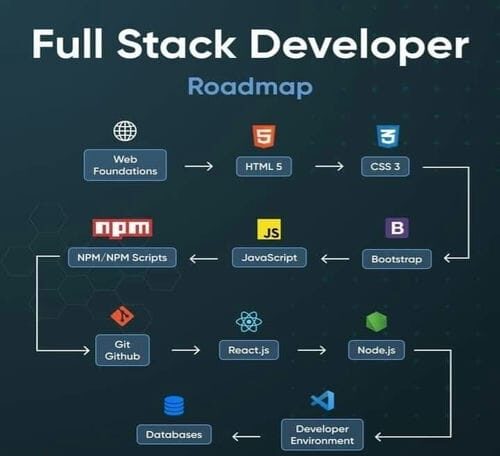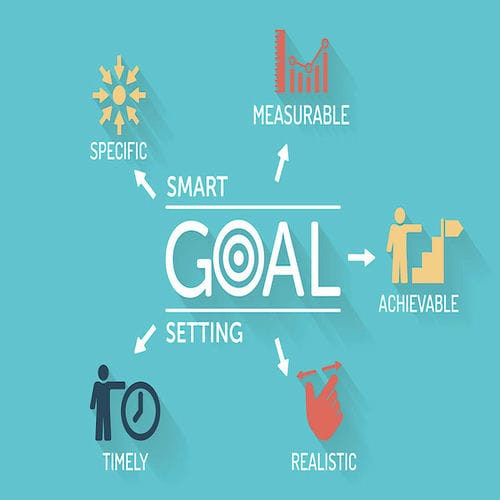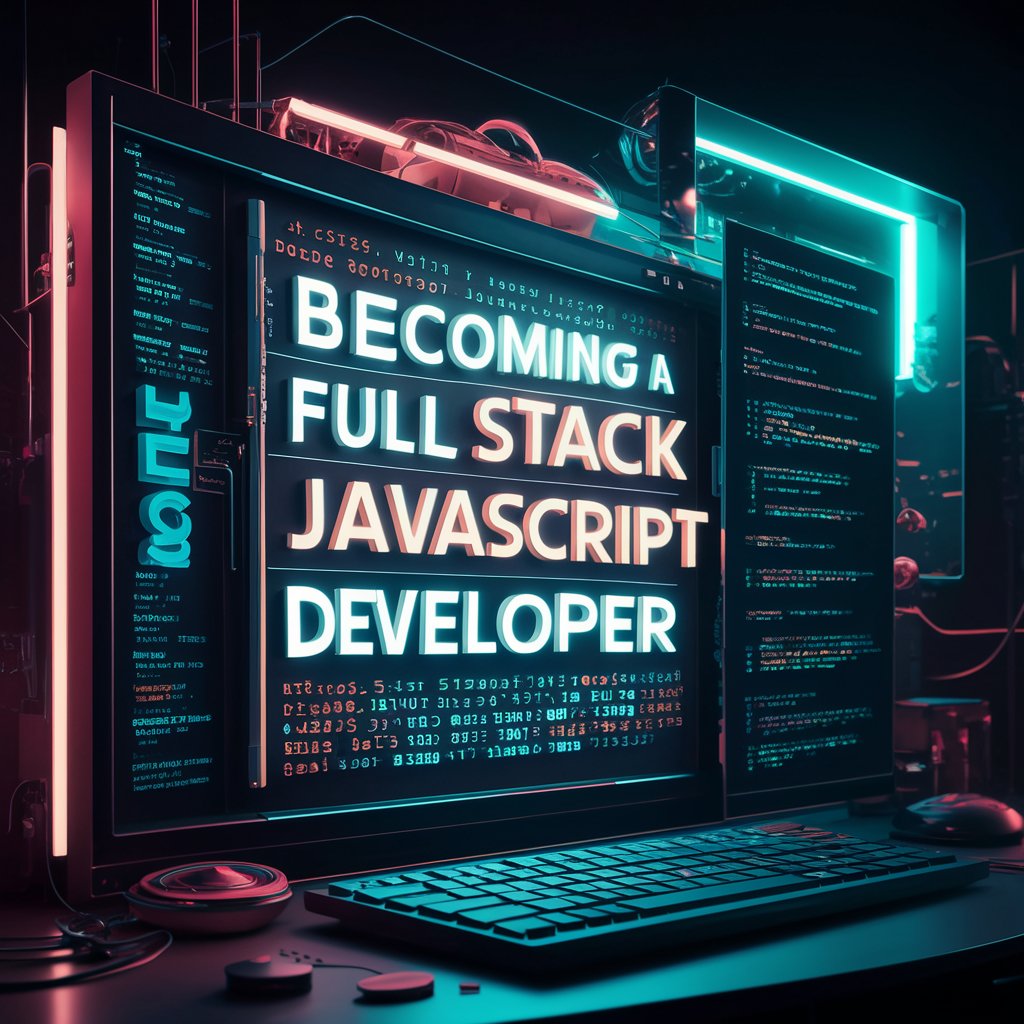Ready to learn the secrets of How To Become A Full Stack JavaScript Developer? In a world, which is dominated by technology, becoming a master of full-stack development is important to unlocking the doors to an infinite kingdom of opportunity.
Imagine yourself constructing a complete web app from the ground up, creatively combining the front-end with back-end functionality, and all using the enchantment of JavaScript. So, whether it is creating outstanding user experiences based on a database or executing logic on a server, you will be equipped for modern digital living.
So, are you excited to start this journey with us? Whether you are a complete beginner who is dying to learn technology or a well-known developer just wanting to learn more about Nevada, Devtrain.co has got your back. let’s see you become a full-stack JavaScript developer.
How To Become A Full Stack JavaScript Developer?
Are you ready to dive into the dynamic world of full stack JavaScript development? Whether you’re a seasoned coder looking to expand your skill set or a newcomer eager to break into the tech industry, mastering full stack JavaScript opens up a world of possibilities. Let’s embark on this exciting journey together!
1. Unlocking the Power of Full Stack JavaScript
The responsibility is that you will design beautiful user interfaces and use them to keep the web application running. Full-stack JavaScript development makes this possible and much more. You can achieve this by using JavaScript to develop websites with a backend and a front end, gaining unwatchable flexibility and resulting in optimal web applications.
2. Why JavaScript?
JavaScript is not just a language; It serves as the foundation for the development of the modern web. Thanks to its enormous popularity and well-supported frameworks and libraries, JavaScript is now the favourite language of developers around the world. By mastering JavaScript, you put yourself at the frontier of the language, able to face and overcome the new challenge that is the digital future.
3. The Thriving Demand for Full Stack Developers
Today, with the virtual world developing from second to second, the need for a full-stack developer is higher than ever. It has become important for companies around the world, regardless of their size. You gain access to a universe of job opportunities and exciting options for professional growth as a full-stack Java script web developer.
As can be seen, the demand for full-stack developers today only grows as the virtual world develops from second to second. It has already been imposed on the company’s agenda all over the world, in each sphere and of any size. As a full-stack Java script web developer, you open a door to the galaxy of work offers and thrilling opportunities for professional development.

Understanding the Basics
So, you’re ready to become a full stack JavaScript developer, but where do you start? Fear not, because we’re here to guide you through the fundamentals that will set you on the path to success.
1. Decoding Full Stack Development
It is important to explain the term full stack development. Generally speaking, it suggests a thorough understanding of the techniques needed to handle both the front end, the part of web applications that final users come into contact with and perceive, and the back end, which houses the system. Being an expert in Full Stack Development (FSD) makes you a versatile and in-demand expert.
2. Why JavaScript is Supreme?
Now, you might wonder why we’re putting all our eggs in the JavaScript basket. Well, for starters, JavaScript powers the vast majority of websites and web applications you interact with on a daily basis. Quite literally, it’s the language of the web, which makes it impossible for an ambitious developer to avoid. But that’s not all, thanks to technologies like Node.js, JavaScript has also made its way into the back end, and, consequently, the whole stack.
3. Front End vs. Back End Difference
For backend, it has something to do with the server-side logic and database management. It can be likened to the warehouse, which suggests that it is also very important. Frontend and backend need to work together to ensure that a user is satisfied with the system that he or she is using.
Essential Skills and Technologies
Now that you’re familiar with the basics, here are the essential skills and technologies that you must learn and explore to become a full-stack JavaScript developer. Some requirements will enable you to successfully establish the first foundation in the quickly evolving web development industry.
1. Proficiency in JavaScript
You need to have a best friend with JavaScript. You must be friendly with ES6 and anything that’s been made available since its release, as modern JavaScript will enable you to do a lot more. JavaScript is fundamental in both the front-end and the back-end, from variables and functions to loops and objects.
2. HTML5 and CSS3 Fundamentals
HTML5 & CSS3 would be the next on the list. These languages are the basis of any web page, enabling you to organise content and decorate it as much as you want. Make your designs adaptable to every type of device, and take a closer look at core CSS frameworks such as Bootstrap and Foundation.
3. Version Control with Git and GitHub
You won’t be working on your projects alone as a full-stack developer. This is where version control comes into play. Git with its online platforms, like, for instance, GitHub, will help you watch all the changes you and your teammates have made, work with each other within the code, and roll back all mistakes in seconds. Learn Git; you won’t ever regret it.
4. Basics of Databases: SQL vs. NoSQL
Finally, get the basics of databases. You should know how to work with SQL or NoSQL databases, as well as how to work with databases using MongoDB, MySQL, PostgreSQL, and other such interaction tools. As a full-stack developer, the ability to upload, retrieve, and modify data and information is critical.

Front End Development
With the foundational skills in your hand, it’s time to explore the world of front-end development and see the magic of bringing your desiring to life. Using HTML, CSS, and JavaScript, you can now use your creativity in a way you never imagined.
1. Mastering HTML and CSS Frameworks
HTML and CSS are front end’s bread and butter, that’s true. But you shouldn’t stop there since your work can both become more powerful and less time consuming if you use frameworks like Bootstrap and Foundation. They offer a variety of predesigned components and styles you can adjust to your liking for your project, which should considerably reduce your efforts and time spent.
2. JavaScript Frameworks and Libraries
After strong fundamentals in HTML and CSS, it is a high time to step up with JavaScript frameworks and libraries. Either you are familiar to React’s component-based architecture or Angular’s two-way data binding as well as the Vue.js’ simplicity and flexibility framework, there is a kind that suits code style. They are designed to incorporate dynamic functionality and interactivity to the web applications.
3. Responsive Web Design Principles
Now, in a mobile-first world, responsive web design is critical. Find out how to design layouts that adjust to various screen dimensions and units, providing a seamless experience across desktops, tablets, and smartphones. Allow media queries, fluid grids, and adaptable images to give life to your projects on any device.
4. Web Performance Optimisation Techniques
No one likes a slow website. Thus, it’s essential to optimize your front-end code for performance. Reduce the size and concatenate your CSS and JavaScript files, optimize images for the web, and use tricks like lazy loading and code splitting to reduce load times and enhance user experience.
Equipped with these abilities for front-end development, everything you need to develop beautiful, high-performance web applications that will blow away your users.
Back End Development
Now that your front-end skills are refined, it’s time to shift gears and explore the world of back-end development. Get ready to dive into server-side programming, database management, and building the logic that powers your web applications.
1. Setting Up a Development Environment with Node.js and npm
Node.js has drastically transformed back-end development as it lets you utilize JavaScript on the server side. Begin your journey by downloading and installing Node.js on your computer via npm. With npm, creating and maintaining all of your activities is a super breeze. Import Error importing packages and dependencies is not a good quality; luckily, npm resolves that issue.
2. Building RESTful APIs with Express.js
Modern web applications rely on RESTful APIs (Application Programming Interface), which act as intermediaries that enable the independent components of a system to communicate with each other. And for that, we can use the Node.js web application framework known as Express.js. This tool makes the process of creating powerful APIs easier. Hence, we’ll show you how to establish routes, process requests and responses, and then integrate middle-ware in this.
3. Database Management and Manipulation
A back end would be entirely incomplete without a database to implement data storage and manipulation. For a serving system housing a relational database which can be MySQL or PostgreSQL or a non-relation database – like MongoDB — then database management is must-have skill for a full stack developer. Understand how to implement CRUD operations or API’s using SQL or MongoDB commands as well as why data model and normalisation are critical in ensuring a callable and non-redundant database structure.
4. Authentication and Authorisation Strategies
Finally, security is critical to web development, where you work with users’ sensitive data most of the time. Use the best authentication and authorisation techniques to make sure only the right users access some of your applications. Use tools like JSON Web Tokens, home call-based authentication, and OAuth to implement secure user authentication and authorisation.
Having familiarised with these back-end development skills, you are prepared for building a powerful, scalable, and secure applications that address both users and businesses concerns. Now, let’s explore in the interesting web of back-end development!

Full Stack Integration
You’ve mastered both front end and back-end development, but now it’s time to bring everything together into a cohesive whole. We’ll explore how to integrate the front end and back end of your web application for smooth functionality.
1. Connecting the Front End and Back End
Full stack development is all about facilitating interaction between the front end and the back end of the application. The AJAX and Fetch API help you accomplish this. Use these two tools to send asynchronous requests to your servers. Update your work without refreshing the page or retrieve new data from the web. This will teach you how to use the principles to build space-efficient, highly responsive user interfaces that communicate with the back-end APIs.
2. Implementing Real-Time Features with WebSockets
Do you want to enhance your Web applications to the next phase? Join WebSockets, which is a communication protocol allowing genuine time and two-way authentication between a client and a server. You may develop a chatroom, a collaborative whiteboard, and a real-time information panel; WebSockets enable you to communicate annually with your clients, providing a genuinely fascinating and lively interface.
3. Implementation Strategies
So, you’ve built your first web application – but how are you going to implement it? From traditional web hosting services such as Heroku or AWS to modern server less platforms like Firebase, there are multiple deployment strategies. You will find out how to configure your environment, deal with domain names and SSL certificates, and implement your application in a secure and efficient fashion.
4. Continuous Integration and Deployment (CI/CD) Pipelines
Even as your application grows and changes over time, and even as users’ needs, feedback, and expectations shift, a powerful and well architected CI/CD pipeline is required to handle the automated testing, building, and deployment of code. Advanced tools such as Jenkins, Travis CI, and GitHub Actions can be used to create automated workflows that result in a development and deployment process that is efficient and stable in order that your application remains usable and up-to-date.
By learning FSI skills like AJAX and WebSockets deploying strategies, and mastering them, you will be able to create responsive, dynamic, and scalable web apps to take your full stack JavaScript development skills to the next level.
Practical Projects and Portfolio Building
Your skills will be tested. Now that you have taken the full stack JavaScript development inside out, it is time to expose your skills to the field in practical projects. This covers some project ideas to enable you to develop a portfolio from where employers can determine your level of expertise.
1. Creating CRUD Applications
Build CRUD applications first when it comes to full stack skills. CRUD stands for Create, Read, Update, Delete, and a Create application provides users abilities to do such things involved in a web application. From making simple to-do lists, managing personal recipes, or maintaining a database of books all are perfect things to enable you to put your full stack development skills to the test.
2. Building a Blogging Platform
Finally, take your skills to the next level by building a full-fledged blogging platform to Allow users to create accounts, write and publish posts, and interact with other users, through comments and likes Implement user authentication, authorization, and content management to develop a sustainable and user-friendly blogging experience.
3. Developing a Social Media Application
Feeling more ambitious? Develop your own social media application. The project may include the creation of user profiles, a news feed, the ability to send friend requests, and send them messages. You can also try to use WebSockets to create real time communication between users. Thanks to a social media application, you’ll definitively prove that you can develop large-scale, highly interactive, and scalable platforms.
4. Contributing to Open-Source Projects
And don’t underestimate the power of open source. Contribute to projects you like, be it fixing bugs, adding new features, or improving documentation. Platforms like GitHub are flourishing with countless projects that need help; seasoned professionals to collaborate with; and, more importantly, an excellent opportunity to do a practice in full stack development. via the contributions to someone’s project, you show employers how much you love and value the community. And the best part about it is that many open-source projects need help.
Learning Resources and Further Reading
Ready to take your full stack JavaScript skills to the next level? Dive into a wealth of learning resources and expand your knowledge with further reading. We’ll explore a variety of educational materials to help you stay on top of the latest trends and technologies in the ever-evolving world of web development.
1. Online Courses, Tutorials, and Bootcamps
Initiate your learning path with full stack JavaScript development-focused online courses, tutorials, and bootcamps. Platforms such as Udemy, Coursera, Codecademy, to name a few, have everything from complete courses designed by professionals in the field to self-paced gaining knowledge from your own peaceful house. There is an offering fitting any experience level, from beginners to experienced developers.
2. Books and eBooks on Full Stack JavaScript Development
Would you like to explore more detailed information? I highly recommend you this range of books and eBooks committed to full stack JavaScript development. As beginner’s guides to expert publications and technical guides, they cover all topics related to front end and back-end technologies, frameworks, and recommendations. Review “Eloquent JavaScript” by Marijn Haverbeke and “Node.js Design Patterns” by Mario Casciaro, among other titles, to receive the most useful information and experience.
3. Blogs, Forums, and Communities
To remain connected with the developer community, you can also participate in online forums, blogs, and community platforms that are actively involved in full-stack JavaScript enterprise. This comprises of Stack Overflow, Reddit, and Dev.to which contain numerous resources, discussions, and ways-to-connect for different developers from beginner to advanced. Participate in discussions, ask key questions, enlighten the community, and be geared with the current trends and technologies in the industry.
4. Continuous Learning and Growth
Lastly, don’t forget that learning is a continuous process. Develop a growth-oriented mindset by investing in continuous learning and improvement. Run experiments with other technologies, ask questions, and challenge yourself to work on more complex projects. As long as you stay active and excited, you will continue to advance as a full stack JavaScript developer, opening new doors and new opportunities to soar in your career.
When it comes to available learning resources, your curiosity and enthusiasm will be the only limiting factors to your growth as a full stack JavaScript developer. Thus, take the time to explore and develop your skills to start an exciting process of continuous progress!
Career Paths and Opportunities
Curious about where your full stack JavaScript skills can take you? We’ll explore the various career paths and opportunities available to full stack developers, from entry-level positions to senior roles, and everything in between. Discover the diverse range of industries and roles that value your expertise and embark on a fulfilling career in the tech world.
1. Roles and Responsibilities of a Full Stack JavaScript Developer
As a full stack JavaScript developer, from designing user interfaces and writing front end code to building APIs and managing databases on the back end, you have the skills and versatility to tackle a wide range of tasks and responsibilities. Whether you prefer the creative freedom of front-end development or the logical challenges of back-end programming, there’s a role out there that’s perfect for you.
2. Job Market Outlook and Salary Expectations
With the increasing digitization of businesses and the growing demand for web applications, full stack JavaScript developers are in high demand across industries. Companies of all sizes, from startups to multinational corporations, are actively seeking talented developers who can build scalable, powerful, and user-friendly web applications. And with competitive salaries and variety of opportunities for advancement, a career in full stack JavaScript development is not only rewarding but also financially rich.
3. Advancement Opportunities and Specialization Areas
As you gain experience and expertise in full stack JavaScript development, you’ll have the opportunity to specialise in specific areas of interest. Whether it’s front-end frameworks like React or Angular, back-end technologies like Node.js or MongoDB, or specialised domains like e-commerce or fintech, there’s no shortage of opportunities to determine your niche and become a subject matter expert in your chosen field.
With a number of career paths and opportunities awaiting you in the tech world, there’s never been a better time to embark on your full stack JavaScript journey. Whether you’re just starting out or looking to take your career to the next level, the skills and knowledge you’ve gained will open doors to exciting opportunities and endless possibilities for growth and advancement.

Conclusion
Now that you’ve learned the basics and explored the essential skills, you’re ready to embark on an exciting journey in web development. As you move forward, remember that learning is a continuous process. Stay curious, keep exploring new technologies, and challenge yourself with projects that push your boundaries. The tech industry is dynamic and ever-evolving, offering endless opportunities for growth and innovation.
Whether you’re interested in building cutting-edge web applications, launching your own startup, or contributing to open-source projects, the possibilities are endless. So, embrace the adventure ahead, stay focused on your goals, and never stop striving for excellence. Your future as a full stack JavaScript developer is bright—go out there and make your mark on the digital world! At Devtrain.co, we’re dedicated to helping you achieve your goals with our comprehensive resources and courses.
Let’s transform your passion for coding into a thriving career. Start your journey at Devtrain.co and unlock your full potential in full stack JavaScript development.



casino
This website, you can discover a wide selection of slot machines from leading developers.
Players can try out traditional machines as well as new-generation slots with vivid animation and exciting features.
Whether you’re a beginner or a seasoned gamer, there’s something for everyone.
casino
All slot machines are available round the clock and optimized for desktop computers and mobile devices alike.
You don’t need to install anything, so you can jump into the action right away.
Platform layout is easy to use, making it convenient to find your favorite slot.
Join the fun, and discover the excitement of spinning reels!